Eco-finance
Your Present Location: PROGRAMS> Eco-finance-

Upcoming China-US phase one agreement drives up yuan rate
The appreciation of the yuan reflects the positive news that China and the US are set to sign a widely expected phase one trade agreement, but in the long run, the currency's exchange rate depends on how the deal is implemented, a Chinese financial expert said on Monday. The offshore yuan strengthened to a five-month high, moving beyond 6.9 per US dollar.
2020-01-16 -

Levy reductions viewed as positive for Chinese, US stocks
China's plan to lower or eliminate import tariffs on a wide range of items, mostly consumer goods, will be a boon to both the Chinese and US stock markets, analysts said on Monday. The move, which comes as China and the US are on track to sign a phase one deal limiting their trade friction, is positive for listed companies in sectors that stand to benefit from the move - and to companies in general.China on Monday announced that duty rates on more than 850 consumer items, from frozen pork and avocados to orange juice and high-technology products, will be reduced or eliminated.
2020-01-13 -

Liu Zongyi: Egalitarian security architecture can help stabilize South Asia
In 2019, there were major changes in the traditional and non-traditional security situation of South Asia. Tensions between India and Pakistan over Kashmir continued and the possibility of an armed clash remained quite high. The geostrategic confrontations in South Asia and the Indian Ocean region are intensifying.The situation in Afghanistan is deteriorating.Overall, the security situation in South Asia is getting worse, which does not bode well for the region's economic development. But there are mainly three possible solutions to improve the situation.
2020-01-13 -
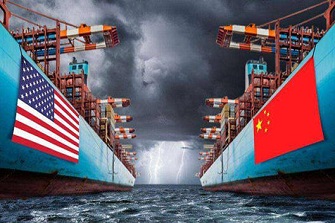
Zhao Minghao: Toward Philosophical Coexistence
China and the United States will sign a phase one trade deal this month, an important step forward in their attempts to ease tensions. Their trade negotiation teams have made great efforts to this end. Needless to say, responses to the agreement have been mixed, and there are some criticisms both in the United States and China. However, this only shows that the final agreement has a certain balance, and it definitely cannot satisfy everyone. The two sides have achieved a necessary compromise.
2020-01-08 -

Zhao Minghao: Toward Philosophical Coexistence
China and the United States will sign a phase one trade deal this month, an important step forward in their attempts to ease tensions. Their trade negotiation teams have made great efforts to this end. Needless to say, responses to the agreement have been mixed, and there are some criticisms both in the United States and China. However, this only shows that the final agreement has a certain balance, and it definitely cannot satisfy everyone. The two sides have achieved a necessary compromise.
2020-01-08 -

Zhao Minghao: Toward Philosophical Coexistence
China and the United States will sign a phase one trade deal this month, an important step forward in their attempts to ease tensions. Their trade negotiation teams have made great efforts to this end. Needless to say, responses to the agreement have been mixed, and there are some criticisms both in the United States and China. However, this only shows that the final agreement has a certain balance, and it definitely cannot satisfy everyone. The two sides have achieved a necessary compromise.
2020-01-08 -

He Weiwen : 4 years of Yangtze River Economic Zone: A development demonstration
The Yangtze River Economic Zone covers 11 provinces and municipalities, accounting for more than 40 percent of the country's population and its total GDP. They include the Yangtze River Delta, which accounts for 21 percent of China's total GDP, the Middle Range of the Yangtze River, and Chengdu-Chongqing Conglomerate in the Upper Range. It has been consistently gaining economic weight in the country over the past four years, accounting for 45 percent of China's total GDP in 2018, compared to 40.9 percent in 2012.
2020-01-06 -
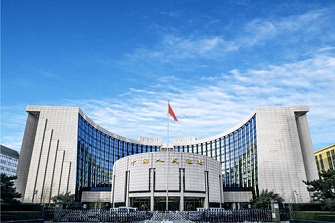
Further RRR cuts predicted in short term
Further cuts in China's overall and targeted required reserve ratios (RRRs) are likely in the short term, possibly at the coming weekend, experts said after Premier Li Keqiang said that multiple measures will be considered to ease financing pressure on small businesses. Li said the measures might include RRR cuts, as well as re-lending and rediscount.Such moves could ease pressure during the upcoming peak season for capital demand in the New Year and Chinese Spring Festival, and keep reducing financing pressure of small businesses so as to boost economic growth, experts told the Global Times on Tuesday.
2020-01-03 -

Bay Area in vanguard of China's global march
The Guangdong-Hong Kong-Macao Greater Bay Area is in the vanguard of China's global economic rise, said John Ross, senior fellow at the Chongyang Institute for Financial Studies at Renmin University of China. Technological development in the region stimulated the integrated development of the entire Bay Area, which also contributed to the development of the world economy, Ross said in a speech at Vision China in Macao recently. He said the region is at the forefront of the "flying geese" development of China.
2019-12-23 -
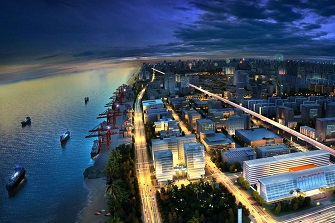
Liu Ying: Further opening-up to protect free trade
This year is crucial to China's higher-level opening-up, symbolized among other things by the construction of the Belt and Road Initiative. That China, amid rising trade protectionism, hosted the second China International Import Expo which attracted more than 180 countries, regions and international organizations, and over 3,800 global enterprises shows it is not only committed to further opening up its economy but also increasing imports to meet Chinese people's ever-growing need for a better life and boost global trade.
2019-12-19 -

Finance reform reins in risks
Regulators recently held talks with the last surviving P2P lending platforms in Beijing, according to a report by the financial news site caijing.com.cn on Tuesday, citing sources close to the matter. In a bid to manage escalating financial risks, China has implemented measures to reign in risky business transactions and illegal speculations.Though Beijing has not announced it will close all P2P platforms, it is encouraging these platforms to implement reforms.
2019-12-06 -

Liu Zhiqin: Opening-up policies need firm application
In order to promote quality economic growth, the Chinese central government has rolled out a series of policies including the Foreign Investment Law which will come into effect on January 1, 2020, 11 measures on financial reform and measures to promote the development of pilot free trade zones (FTZs). These policies have been well received by markets, will significantly improve the domestic business climate and will boost investor confidence.
2019-12-04 -
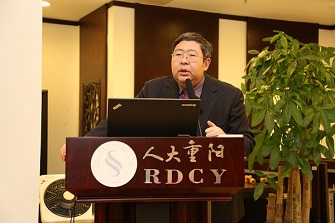
Jia JInjing: The development of productive forces in 70 years
On October 31st, the eighth lecture of "The 70th Anniversary of the Founding of The PRC" series which hosted by Chongyang Institute for Financial Studies of Renmin University of China (RDCY) and Huanqiu Web, was held at RDCY. Jia JInjing, assistant to the Dean of RDCY and director of the Marco Research Department, delivered a keynote speech on "The development of productive forces in 70 years". The lecture was hosted by He Si, the director of the Office of RDCY. More than 100 guests attended the lecture.
2019-11-22 -
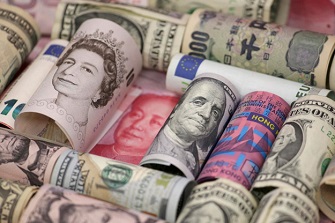
He Yafei: Global Changes Require China to Open Further
The world today faces profound changes unseen in a century, including in its economy. The rapid development of multi-polarization and economic globalization over the past several decades has brought about major changes in the balance of economic power. These changes are characterized by the rise of new powers in the East and the fall of old ones in the West, with the overall strength of developing countries and emerging economies rising considerably.
2019-11-08 -

He Weiwen: Facing the global headwind, China's economy offers hope
The second China International Import Expo (CIIE) opened on November 5, in the midst of a synchronized sharp slowdown in 90 percent of the world's economies. The second CIIE also offers a hope for the world with a vast, fast-growing Chinese market and a firm commitment to open the door ever wider, which explains the very high business attendance from the world over, with 330,000 square meters show area, 10 percent up from the first CIIE.
2019-11-06 -

How a Latvian bath bomb tapped into China's beauty market
China is set to overtake the U.S. to become the world's largest beauty market this year, according to a Morgan Stanley research report. Companies around the world are trying to tap into the country's burgeoning demand for cosmetics and personal care products. In an industry dominated by big brand names, a much smaller enterprise from Latvia is forging ahead in China, focusing on the niche section of bath and shower products. Bath bombs in particular have been trendy among young people.
2019-11-01 -

Sci-tech board wins plaudits at 100 days
With the STAR Market, the Shanghai Stock Exchange's sci-tech innovation board, set to mark its 100th day of trading on Tuesday, experts are lauding its role in China's national strategy of innovation-driven development via science and technology. The market, called the Chinese version of the NASDAQ, was designed to focus on companies in high-technology and strategic emerging sectors. It started trading with 25 listings and now has 36.
2019-10-29 -
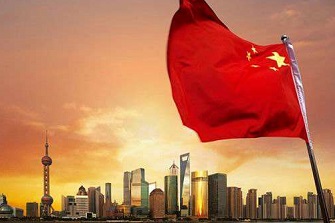
He Weiwen: Will China’s GDP Growth Slip Below 6%?
The latest official data shows that the Chinese economy slowed further in the third quarter this year, with its GDP growth rate of 6.0 percent, which is down from 6.2 percent in Q2 and 6.4 percent in Q1. The first three quarters combined had a rate of 6.2 percent, down from 6.3 percent in the first half of the year. The past seven quarters since Q1 2018 have seen uniform economic slowing, with the quarterly GDP growth rate of 6.8 percent in Q1 2018 dropping to 6.7, 6.5, 6.4, 6.4, 6.2 and 6.0 for each subsequent quarter, respectively. If this trend continues, Q4 2019 GDP growth seems poised to slip below 6.0 percent.
2019-10-28 -
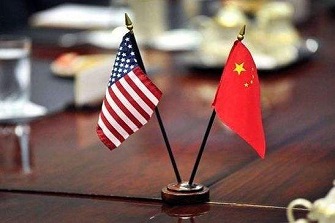
Wang Wen& Liu Ying: Ten areas where China and US need to focus
Substantial progress has been made in the latest round of China-US trade consultations on October 11. The volatile trade dispute which has taken global economic circles by storm over the past year and a half hasn't led to the collapse of the two countries' trading relationship in at least 10 fields. Cooperation in ties hasn't evaporated but rather seems to be strengthening. Enhancing cooperation in these 10 areas will not only be a key to stabilize ties but also an effective way to reverse global pessimism.
2019-10-25 -
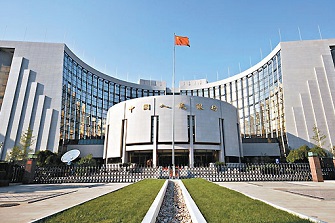
Unchanged LPR indicates PBC’s prudent monetary policy
The loan prime rate (LPR) for one- and five-year terms in October has remained unchanged from the previous month, according to the People's Bank of China (PBC) on Monday, and analysts said the situation indicates prudent monetary policy. For one-year maturities, the LPR was unchanged from last month's 4.2 percent, and the five-year prime rate stayed flat at 4.85 percent, according to the National Interbank Funding Center, a unit of the central bank, on Monday.
2019-10-24























































































 京公网安备 11010802037854号
京公网安备 11010802037854号





